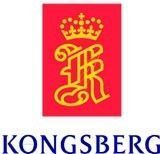
-
StatusCompleted
-
Status date2009-02-03
Based on multi-beam satellite concept, offering multimedia services at Ka frequency bands, the overall objectives of this programme is to design and to develop a GEO satellite system, to manufacture some of the equipments in breadboard and EQM quality (generic building blocks), and to test the whole system (hardware and software components) within a specifically developed system test bed (system feasibility assessment, data transmission performance and traffic management efficiency).
The satellite system shall support a flexible, efficient and high capacity two-way data exchange scheme with data transfer in real and non-real time, and in bursty and non-bursty modes, to a large number of end-users using fixed terminals. The system is managed by a centralized Network Control Center (NCC) controlling the overall network that is composed of several Interactive Networks (IN). The INs consist of a set of terminals (ST and NAT) for access to the external networks.
The main objectives of the satellite payload is to provide connections between a set of terminals and gateways located within the field of view of the satellite. The satellite payload supports the forward and return mission between the gateways and there associated cluster of end user beams, and the mesh mission from any user beam to any user beam.
To achieve this goal the Domino 2 contract is phased into:
- Batch 1: Multimedia System Studies
-
Batch 2: Development of key On-board Equipments (Version D2V1: Circuit Switch Payload, and Version D2V2: Packet Switch Payload) and
-
Batch 3: Evolution of SatCom Engineering and Validation (radio resource enhancement, network architecture enhancement, QoS and SLA management), Complementary on-board Equipment (APS, FAFR antenna, OBP technology).
|
<A cla |
na
Due to the development of generic modular hardware and software building blocks in EQM standard it is possible to react quickly to arising flight opportunities (as proven with the AmerHis payload for Amazonas). Only mission specific items need to be developed from scratch, or even only modified in many cases, while the bulk of hardware and software required is only subject to adaptation.
The Domino 2 system can be split into 3 main parts:
- The Space Components consist of a satellite and associated control (TT&C station and satellite control center (SCC)). The satellite includes a regenerative payload (demodulation, decoding, switching, coding, modulation) with a multi-beam coverage
- The Terminal Components consist of a satellite terminal (ST) and network access terminals (NAT). These terminals may be connected to terrestrial networks (for NAT) or to the customer premises equipment (for ST), either directly or through a LAN.
-
The Control and Management Components, consisting of one mission and management system (MNMS) for non-real time high level management functions: frequency plan management and bandwidth allocation provision, payload configuration, general (static) signalling data management, and network control center (NCC) functions for real-time control of connections.
The air-interface is based on DVB-RCS standard for the uplink, and DVB-S for the downlink, the coverage is for West and East Europe (satellite position at 24.2 deg E). The Domino 2 system will support IP services as well as native MPEG based services with efficient multicast and QoS support. The connectivity possibilities are: point-to point (unicast), point-to-multipoint (multicast and broadcast), multipoint-to-point, multipoint-to-multipoint (mesh or some to many).
The main actors within the Domino2 system are:
- Satellite Network Operator (SNO), operating the satellite and offering coverage provision
- Interaction Network Access Providers (INAP), supplied with satellite capacity and coverage
- Service Provider (SP), buy from INAP network resources
- Subscribers, have contractual relationship with service providers
-
End-users, directly connected to a satellite terminal or via LAN
<TABLE cellSpacing=0 cellPadding=0 width=180 align
The ongoing and newly launched are of critical importance (long-lead units), therefore developed and implemented for short time-to-market Ka-band operational application (meaning dedicated satellite system implementation tolerant), aiming for generic modular building blocks (space and ground segment, hardware and software). These development activities include Satcom Network Engineering (terminals and control/management components), Packet Switch OBP (MCDDD, Routing and Formatter ASICs in latest high density ASIC technology, Ka-band MMICs, FAFR Antenna and APS (multi antenna pointing system).
These activities are in progress over the next 28 months.
A first flight opportunity has been already identified with the AmerHis payload (4 regenerative transponders, based on Domino D2V1 activities), being integrated on Amazonas satellite (operated by Hispasat) by September 2003). Other flight opportunities expected for KaSat projects (based on Domino D2V2 development work).
System oriented engineering work, in specific system architecture, NCC, NAT NT engineering, QoS and SLA management, payload engineering, has been deeply addressed and is close to finish (except those activities which are subject to continuous updates). A complete OBP breadboard, based on D2V1 configuration, has been built and tested (and has now contributed to successful start of payload hardware to be flown on Amazonas satellite, see above). Within the D2V2 line hardware finished (breadboard and EQM units) are Ka-band Direct Modulator, Antenna Dishes (inclusively feed), MCDDD and Switch ASICs.
Work in progress are still system oriented engineering work, and hardware built of FAFR Antenna and Multi-antenna Pointing System, as well as full Domino 2 system test bed.
Very soon it is expected that modular building blocks hardware development and manufacture activity will start for Ka-band LNA (including MMIC), OBP ASICs to fulfil the Formatter functions, ASIC implementation based on high density technology, and test-set up for complete breadboard testing of the OBP function (D2V2 concept).








